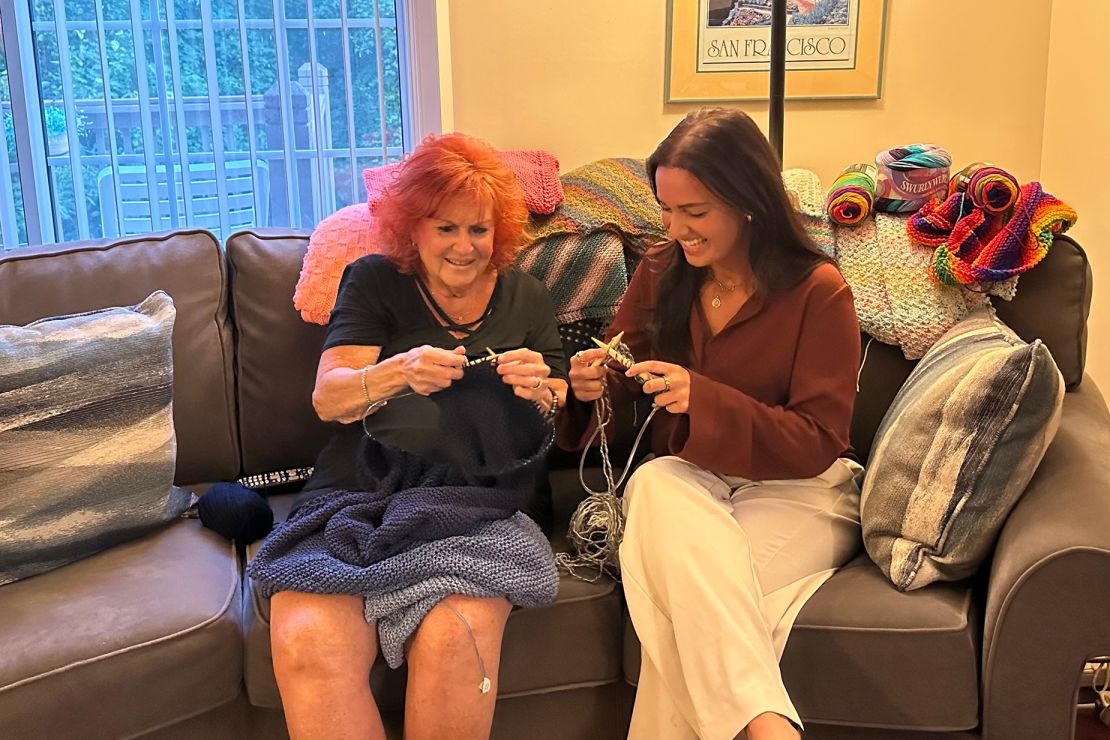Southampton, Pennsylvania
CNN
—
Get inspired by the weekly roundup about living well, made simple. Sign up for CNN’s Life, But Better newsletter for information and tools designed to improve your well-being
Walking into my grandmother’s house, I watched her hands move in quick weaving motions as the stitches extended from her knitting needles. Next to it are piles of knitted blankets, shawls and ponchos sewn with carefully selected color schemes and patterns from woolen yarn. He donated these blankets to children’s hospitals and orphanages.
His favorite pastime is making. She is always crafting, be it embroidery, coloring, scratch art or most recently, dabbling in jewelry. This activity provides satisfaction and purpose in a more fulfilling way than work.
She infused her love for arts and crafts into the rest of my family. My mother joined a community theater group when she was an empty nester and learned to cast. My cousin is a young photographer, and his father (my uncle) has a comedy podcast and voice actor. My twin sister and I sang in college – it kept us sane while balancing a heavy academic workload.
We thought it was good for our health, and we were right. Creating art reduces levels of cortisol, the body’s stress hormone, past studies show.

“Involving arts and crafts is accessible and affordable. Options such as knitting and drawing require few tools and can be fun and creative activities,” said Dr Helen Keyes, cognitive psychologist and head of the school of psychology and sports science at Anglia Ruskin University, via email.
Now, new research by Keyes and fellow researchers has found that engaging in creative activities can significantly improve well-being by providing a meaningful space for expression and achievement.
Although previous research has shown that creating arts and crafts is therapeutic for people with mental health conditions, the general population has been understudied, according to the study, which was recently published in Frontiers in Public Health.
That’s why they sample members of the general population without diagnosed diseases to see how arts and crafts can contribute to well-being and can reduce the results of loneliness in everyday life.
The team used data from a major national survey in England between 2019-2020 to investigate how creative activities can affect life satisfaction, controlling for variables known to affect well-being such as gender, age group, health, employment status and deprivation. The researchers analyzed a sample of 7,182 participants living in the UK (aged 16 and over) from the annual Taking Part survey conducted by the UK Department of Culture, Media and Sport, which explores how people engage in these activities.
“We keep analyzing arts and crafts on a broad level, rather than focusing on specific hobbies, because we know that people’s tastes are different and they will find a craft or creative activity that works best for them,” Keyes said.
More than 37% of survey respondents confirmed that they had participated in at least one craft activity in the last year. They were also asked about their employment status, health, their sense of worth living, how often they feel lonely and their level of happiness, anxiety and life satisfaction.
Participants’ reported happiness, life satisfaction and sense of worth in life were positively associated with participating in arts and crafts, but arts and crafts were not associated with decreased anxiety or loneliness which requires further research. Additional studies are needed to investigate the social aspects of creative activities, the researchers said.
“All forms of art can be beneficial for improving mental health. Benefits include: increasing self-esteem, reducing anxiety/stress, improving communication, and fostering creativity,” said Dr. Frank Clark, a psychiatrist with Prisma Health and a poet, via email. Clark was not involved in the study.
Arts and crafts for public health
Research suggests that arts and crafts can improve people’s health.
“Governments and national health services can consider funding and promoting crafts, or even socially recommending these activities for at-risk populations as part of a promotional and preventive approach to well-being and mental health,” Keyes said. “Getting involved with crafts is something that is relatively easy to introduce into your life.”
Crafting provides an opportunity for a sense of achievement and expression through creation.
“A sense of mastery is important for well-being, and there is inherently a sense of mastery associated with crafting and making art; that is, people can see their progress and be proud of what they produce,” said Keyes via email.
If you don’t think of yourself as artistic or creative, Clark has four suggestions for tapping into your creative side: Reframe your thinking to be optimistic about your creative potential; don’t be afraid to take risks to try new activities; foster relationships with people in creative spaces that interest you; and think about what you did creatively as a child and do it again.
A cheap option for indulging in creativity is coloring. Although some may perceive coloring as an activity for children, “I love adult coloring books and encourage everyone to embrace their inner child,” said Clark. “Coloring is an example of a mindfulness activity that has many health benefits. It can help with social connections, improve concentration, and encourage creativity.
And when you’re creative, anything can happen. “Creativity has the power to foster resilience, restoration, and reconciliation,” he said. “It’s a cathartic antidote that can help give meaning and purpose to humanity.”
#Creating #arts #crafts #improves #mental #health #job #scientists #CNN